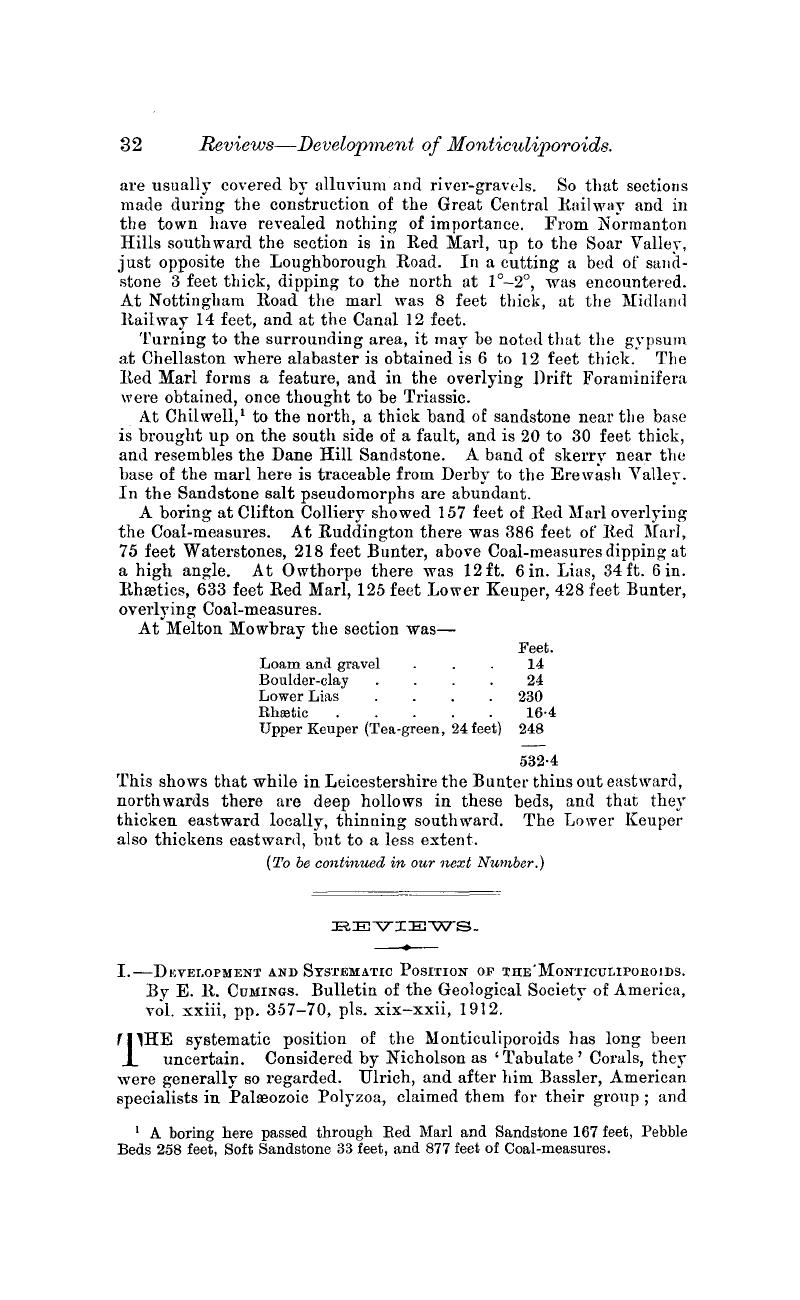No CrossRef data available.
Published online by Cambridge University Press: 01 May 2009

page 33 note 1 Nature, vol. lxxxix, p. 502, 1912.Google Scholar
page 33 note 2 Nicholson, , On the Structure and Affinities of the genus Monticulipora and its sub-genera, 1881, p. 1.Google Scholar
page 33 note 3 D'Orbigny, , Prodrome de Paléontologie stratigraphique universelle, vol. i, p. 25, 1850.Google Scholar
page 34 note 1 Barrois, , Recherches sur l'embryologie des Bryozoaires, 1877, pp. 70–85, pls. iii and iv.Google Scholar
page 34 note 2 Harmer, , “On the Development of Tubulipora”: Quart. Journ. Micros. Sci., vol. xli, pp. 73–157, 1898.Google Scholar
page 34 note 3 Lang, “The Jurassic forms of the ‘genera’ Stomatopora and Proboscina”: Geol. Mag., Dec. V, Vol. I, pp. 315–22, 1904.Google Scholar
page 34 note 4 Cumings, “Development of some Palæozoic Bryozoa”: Amer. Journ. Sci., ser. IV, vol. xvii, p.50, 1904.Google Scholar
page 34 note 5 Jullien, , Mission Seientifique du Cap Horn, 1882–3, tom. vi, Zoologie—Bryozogires, p. 29, 1888.Google Scholar
page 34 note 6 Cumings, op. cit., pp. 58–74, 1904.Google Scholar
page 34 note 7 Cumings, “Development of Fenestella”: Amer. Journ. Sci., ser. IV, vol. xx, p.170, 1905.Google Scholar
page 35 note 1 What are here considered as the post-Palæozoic Trepostomes are the Heteroporidæ, Cerioporidæ, and their allies.
page 35 nete 2 Cumings, loc. cit., 1905.Google Scholar
page 35 note 3 Cumings, op. cit., p. 76, 1904.Google Scholar
page 35 note 4 Lamouroux, , Exposition Méthodique des genres de I'ordre Polypiers, 1821, p. 113.Google Scholar The three specimens mentioned in the British Museum Catalogue of Jurassic Bryozoa, 1896, as coming from the Norman Calcaire à Polypiers are not free from doubt; one certainly and another probably are from the Cretaceous of Maastricht.